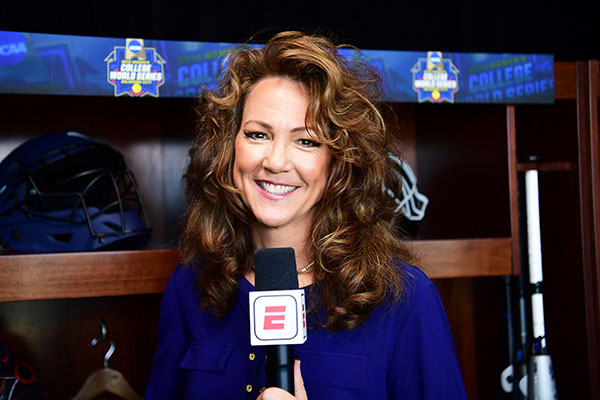Soon after the completion of the Women’s College World Series (WCWS) in Oklahoma City in early June, where the University of Oklahoma defeated Florida State University for the NCAA Division I championship, which was broadcast on ESPN, we caught up with ESPN softball color analyst Michele Smith, a former two-time U.S. Olympic (1996 and 2000) softball gold medalist, for a quick interview on the state of the Women’s College World Series and women’s fast-pitch softball.
Question: How would you compare this year’s Women’s College World Series to previous ones?
Answer: The Women’s College World Series is always an elite event and always has been. It feels bigger these days with the improvements made at the Hall of Fame Stadium [in Oklahoma City] and with the TV coverage. We have ABC “windows” now and just a lot more exposure. ESPN has done an amazing job giving [fast-pitch] softball exposure and amplifying our sport.
Question: How many years have you been a part of the Women’s College World Series broadcast?
Answer: I’ve been broadcasting the WCWS production for more than 20 years. In general, I have been broadcasting softball for over 25 years. It has been an honor to be a part of the sport. I love to help grow it on and off the field.
Question: When you compare women’s fast-pitch softball now to when you played at Oklahoma State University from 1986-1989, what are the biggest changes and improvements?
Answer: TV is absolutely the largest improvement to our game, as well as technology to help grow the athletes and the sport on the field of play.
Question: Where have manufacturers made the biggest improvements in softball gear for women?
Answer: Manufacturers are definitely improving the game by improving the technology — the bat, the ball and all the things that can make a difference to an athlete and help them improve their abilities.
Question: Are you part of any efforts to bring women’s fast-pitch softball to Los Angeles during the 2028 Summer Olympics?
Answer: I’m not, unfortunately. Not sure what will happen with LA 2028.








